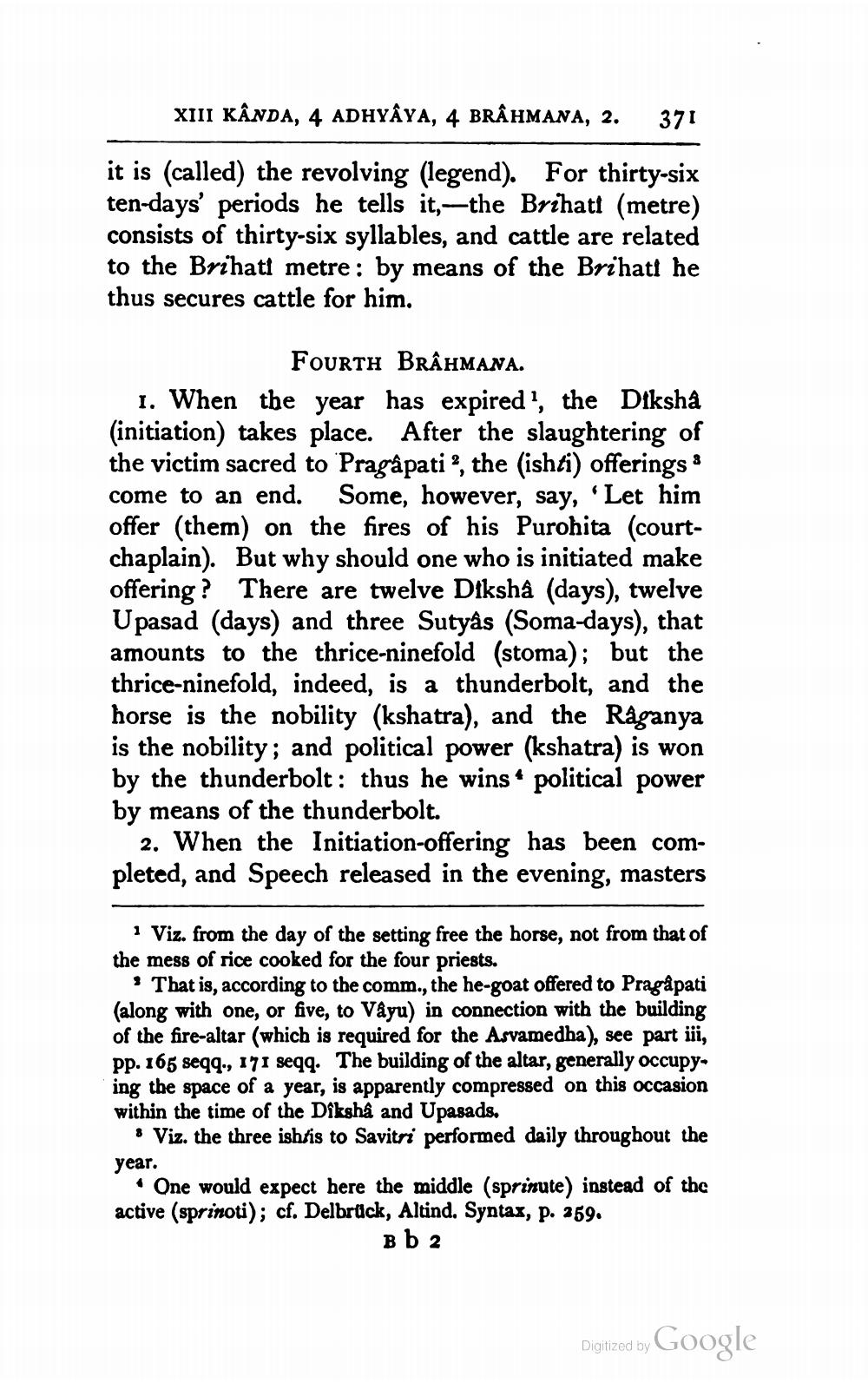________________
XIII KÂNDA, 4 ADHYAYA, 4 BRAHMANA, 2.
371
it is (called) the revolving (legend). For thirty-six ten-days' periods he tells it,—the Brihatt (metre) consists of thirty-six syllables, and cattle are related to the Brihati metre: by means of the Brihati he thus secures cattle for him.
FOURTH BRÂHMANA. 1. When the year has expired', the Dikshå (initiation) takes place. After the slaughtering of the victim sacred to Pragâpati ?, the (ishti) offerings : come to an end. Some, however, say, 'Let him offer (them) on the fires of his Purohita (courtchaplain). But why should one who is initiated make offering? There are twelve Dikshå (days), twelve Upasad (days) and three Sutyas (Soma-days), that amounts to the thrice-ninefold (stoma); but the thrice-ninefold, indeed, is a thunderbolt, and the horse is the nobility (kshatra), and the Råganya is the nobility; and political power (kshatra) is won by the thunderbolt : thus he wins political power by means of the thunderbolt.
2. When the Initiation-offering has been completed, and Speech released in the evening, masters
1 Viz. from the day of the setting free the horse, not from that of the mess of rice cooked for the four priests.
* That is, according to the comm., the he-goat offered to Pragapati (along with one, or five, to Väyu) in connection with the building of the fire-altar (which is required for the Asvamedha), see part iii, DD. 165 seqq., 171 segg. The building of the altar, generally occupy ing the space of a year, is apparently compressed on this occasion within the time of the Diksha and Upasads.
Viz. the three ishtis to Savitri performed daily throughout the year.
• One would expect here the middle (sprinute) instead of the active (sprinoti); cf. Delbrück, Altind. Syntax, p. 259.
Bb 2
Digitized by Google




